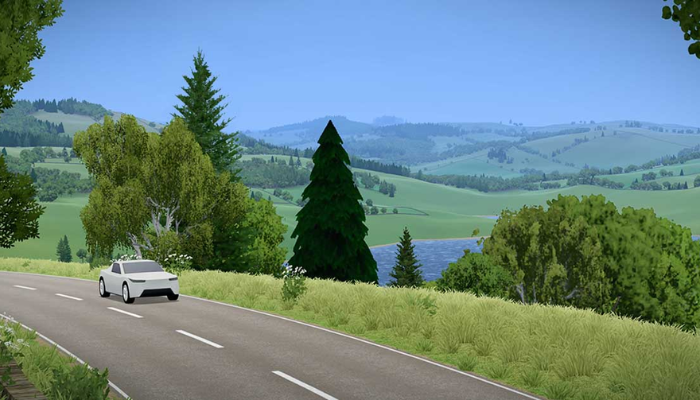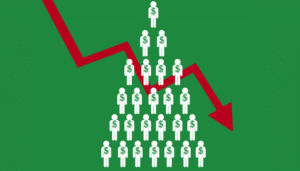
Slow roads unblocked is more than just a phrase—it’s a modern traveler’s goal. Whether you’re navigating city streets or scenic rural paths, getting stuck behind traffic or road restrictions can be frustrating. Luckily, with the right tools, insights, and a bit of creativity, you can unlock smoother, faster routes. In this article, we’ll dive into practical ways to unblock slow roads, optimize your travel, and discover hidden opportunities for quicker and stress-free journeys.
From smart navigation apps to lesser-known shortcuts, the “slow roads unblocked” movement is empowering commuters, delivery drivers, and everyday adventurers alike. Let’s explore how to turn tedious roadblocks into open highways.
Understanding the Causes of Slow Roads
When it comes to road delays, many factors are at play. Traffic congestion, construction zones, school zones, and poorly timed traffic signals are just the tip of the iceberg. Understanding these root causes is the first step toward unblocking slow roads effectively.
Traffic congestion, particularly during rush hours, can drastically reduce average driving speed. Events such as accidents, bad weather, and even local festivals can cause unexpected backups. Knowing when and where these events typically occur can help you plan better routes. For instance, using historical traffic data from tools like Google Maps or Waze can give you an edge in timing your departure to avoid these slowdowns.
Another major contributor to slow roads is infrastructure limitations. Some roads are simply not designed for the volume of traffic they receive. Narrow lanes, lack of passing zones, and absence of alternative routes can result in chronic delays. By identifying these bottlenecks and planning your travel around them, you begin to effectively “unblock” slow roads.
Leveraging Smart Navigation Tools for Fast Travel
In the digital age, your smartphone is your best co-pilot. Navigation apps have revolutionized how we deal with slow roads, giving us the ability to bypass congestion and reroute in real-time. Apps like Google Maps, Waze, and Apple Maps are invaluable for uncovering slow roads unblocked scenarios that get you to your destination quicker.
Waze, for example, provides crowd-sourced updates on traffic jams, police presence, and road closures. This allows users to make informed decisions based on real-time data. Google Maps, on the other hand, uses AI and historical traffic patterns to predict the fastest routes—even if that means detouring through side streets or neighborhoods you might not otherwise consider.
Additionally, offline GPS apps such as HERE WeGo or Sygic offer excellent performance even in areas with poor signal reception. These are especially useful for unblocking slow rural roads where network coverage is limited but alternate paths might still exist.
Exploring Alternate Routes and Backroads
Sometimes the best way to unblock a slow road is to avoid it altogether. Learning about and exploring alternate routes can turn a frustrating commute into a scenic and efficient adventure. Backroads, side streets, and even unpaved roads can be legitimate solutions, especially in semi-rural or suburban areas.
Route diversification helps not only in avoiding traffic but also in spreading out the wear and tear of daily driving. Apps like Komoot or Scenic are geared toward adventurers and motorcyclists but can be excellent for identifying these lesser-known roads. By venturing off the beaten path, drivers often discover faster and more enjoyable ways to travel.
Another tactic is local knowledge. If you’re driving in a new area, ask residents or consult local forums like Reddit or Facebook Groups. Locals often know the best-kept secrets about shortcuts and time-saving tricks—real-world knowledge that no GPS can beat.
Timing Is Everything: Planning for Efficiency
When you travel matters just as much as how you travel. One of the most overlooked strategies for getting slow roads unblocked is adjusting your travel schedule. Avoiding peak hours can often shave minutes—or even hours—off your journey.
Start by identifying rush hour windows. In most urban areas, these occur between 7–9 a.m. and 4–6 p.m. However, weekends can also be problematic due to shopping or event traffic. Scheduling your travel outside these hours, even by 15–30 minutes, can significantly change your experience on the road.
In addition, pre-trip planning can save you from road surprises. Use apps like INRIX or TomTom to view future traffic trends. You can even sync your calendar with your navigation app to receive timely alerts about when to leave, based on real-time traffic forecasts. With a little preparation, you’ll have slow roads unblocked before you even start the engine.
Driving Behavior and Vehicle Choice Matter
Even with the best routes, your driving style can influence your travel speed. Smooth acceleration, strategic overtaking, and consistent lane usage can help you move more efficiently through traffic, unblocking your path without breaking any rules.
Aggressive driving, like rapid acceleration and sudden lane changes, often backfires, leading to more stress and sometimes even slower progress. Instead, adopt a proactive driving style—anticipate lights, maintain safe distances, and align with the flow of traffic. This approach not only helps in moving through traffic more fluidly but also reduces fuel consumption and vehicle wear.
Your choice of vehicle also plays a role in navigating slow roads. Smaller cars and hybrids can fit through tighter spaces, accelerate efficiently, and handle urban environments better. On the flip side, electric vehicles with adaptive cruise control and traffic-aware navigation are gaining popularity for their ability to optimize travel time intelligently. Consider how your vehicle complements your desire to keep those slow roads unblocked.
Conclusion: Master the Art of Keeping Slow Roads Unblocked
Navigating the modern roadways doesn’t have to mean sitting in endless traffic or feeling stuck. With smart tools, well-planned timing, flexible routes, and mindful driving, you can effectively keep slow roads unblocked. This shift isn’t just about speed—it’s about control, efficiency, and a smoother, more enjoyable journey.
So the next time you’re met with a frustrating slowdown, remember: the road ahead doesn’t have to stay blocked. You’ve got the knowledge, the tools, and the power to steer around it.
FAQs About Slow Roads Unblocked
1. What does “slow roads unblocked” mean?
It refers to overcoming traffic delays or road restrictions by using tools, planning, and strategy to ensure smooth travel.
2. Which app is best for avoiding slow roads?
Waze and Google Maps are top choices due to their real-time updates and route optimization features.
3. Can local knowledge really help in unblocking slow roads?
Absolutely. Locals often know shortcuts and alternate paths that aren’t listed in popular GPS apps.
4. Are toll roads a good alternative to slow roads?
Yes, toll roads can offer faster travel times, especially during peak hours, though they come at a cost.
5. What causes roads to become slow?
Common causes include traffic congestion, construction, poor infrastructure, and unpredictable events like accidents or weather.
6. How do I plan a trip to avoid slow roads?
Use navigation apps that provide predictive traffic data and plan your departure during off-peak hours.
7. Are rural roads usually faster?
Rural roads may have less traffic, but they can also be narrow or poorly maintained. It depends on the specific route.
8. How does driving behavior affect travel speed?
Proactive, defensive driving helps maintain momentum and avoid unnecessary stops or slowdowns.
9. Do EVs help with navigation efficiency?
Yes, many electric vehicles come with built-in intelligent navigation systems that optimize for speed and range.
10. Is using alternate routes always better?
Not always, but they can offer significant time savings when primary roads are congested or blocked.





